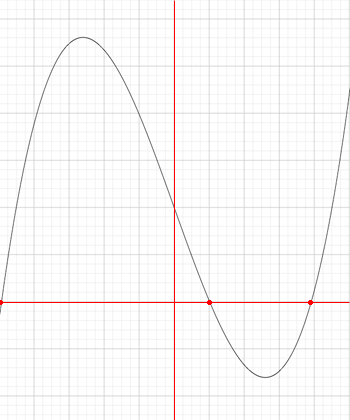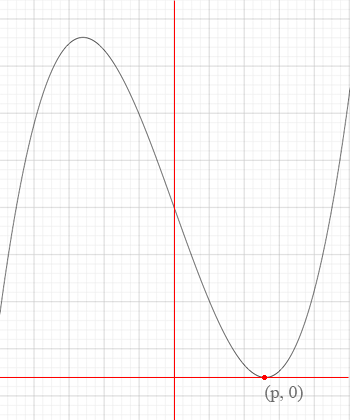| |||
| Math Central | Quandaries & Queries |
|
Question from Jyotishman, a student: What can be the value of a for the equation to have 3 roots? |
Hi Jyotishman,
This problem involves geometry and calculus. The geometry tells me what it is I need to find and the calculus gives me a method to find it. I can get you started.
First I graphed y = f(x) = x3 - 13x + a with a = 0. The axes are in red and I didn't put the scale on the axes since I am interested in the shape not the scale. This graph crosses the x-axis in 3 places marked by the red dots.

As a increases he graph moves upwards relative to the axes maintaining three distinct zeros until

until a attains a value for which the polynomial f(x) = x3 - 13x + a two distinct roots, one of them I am going to call p as in the diagram. (One root is not on my diagram.) O

If a increases beyond this value the resulting graph only crosses the x-axis at one point (not on the diagram).

The task is thus to find p and then the value of a so that f(p) = p3 - 13p + a = 0.
p is a critical value for the polynomial f(x) so it can be found by solving f '(x) = 0.
Do you now see how to complete the problem? If you need further assistance write back.
Harley
 |
||
Math Central is supported by the University of Regina and The Pacific Institute for the Mathematical Sciences.